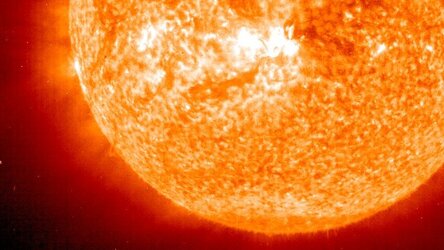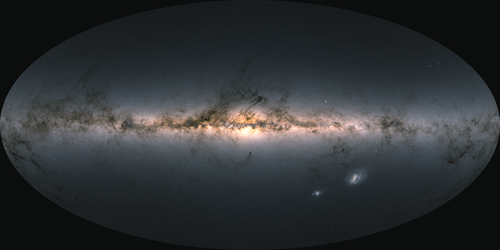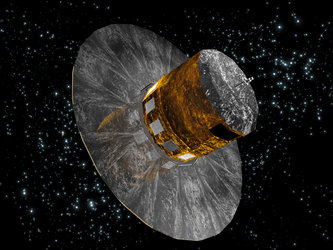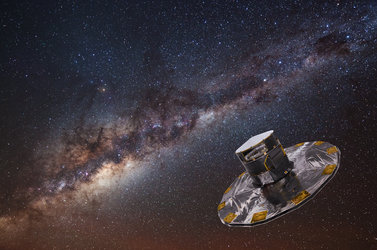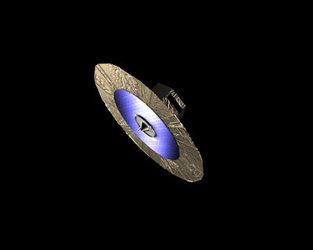Gaia checks out of antenna testing
Entombed by the distinctive foam pyramids typical of test chambers, the main antenna of the Gaia billion-star surveyor has been put through its paces ahead of launch next year.
The antenna will send Gaia’s precious science data to Earth from its location 1.5 million kilometres away.
Over five years, Gaia is expected to download 200 TB of data – the equivalent of nearly 45 000 standard DVDs – as it makes precise measurements of the positions of a billion stars.
The information will be used to create a 3D map of stars in our home Galaxy, revealing information about its composition, formation and evolution.
Since the spacecraft rotates in space, a complex antenna steered electronically is required to ensure the beam is always directed towards Earth.
By comparison, a conventional mechanical antenna would create tiny vibrations that would impair the performance of the mapping telescope.
The photo shows the 1.5m diameter Gaia antenna panel in the test facility at EADS CASA, Madrid. The chamber’s walls are covered with pyramids of non-reflective foam that absorb reflected radio waves to simulate the boundless nature of space.
The chamber also blocks all external signals, such as aircraft radar and cell phones.
As the panel has to radiate the heat generated by the satellite and received from the Sun, it is covered with mirrors.
Gaia will be launched in 2013 from Europe’s Spaceport in French Guiana, and will have an initial lifetime of five years.















 Germany
Germany
 Austria
Austria
 Belgium
Belgium
 Denmark
Denmark
 Spain
Spain
 Estonia
Estonia
 Finland
Finland
 France
France
 Greece
Greece
 Hungary
Hungary
 Ireland
Ireland
 Italy
Italy
 Luxembourg
Luxembourg
 Norway
Norway
 The Netherlands
The Netherlands
 Poland
Poland
 Portugal
Portugal
 Czechia
Czechia
 Romania
Romania
 United Kingdom
United Kingdom
 Slovenia
Slovenia
 Sweden
Sweden
 Switzerland
Switzerland


























